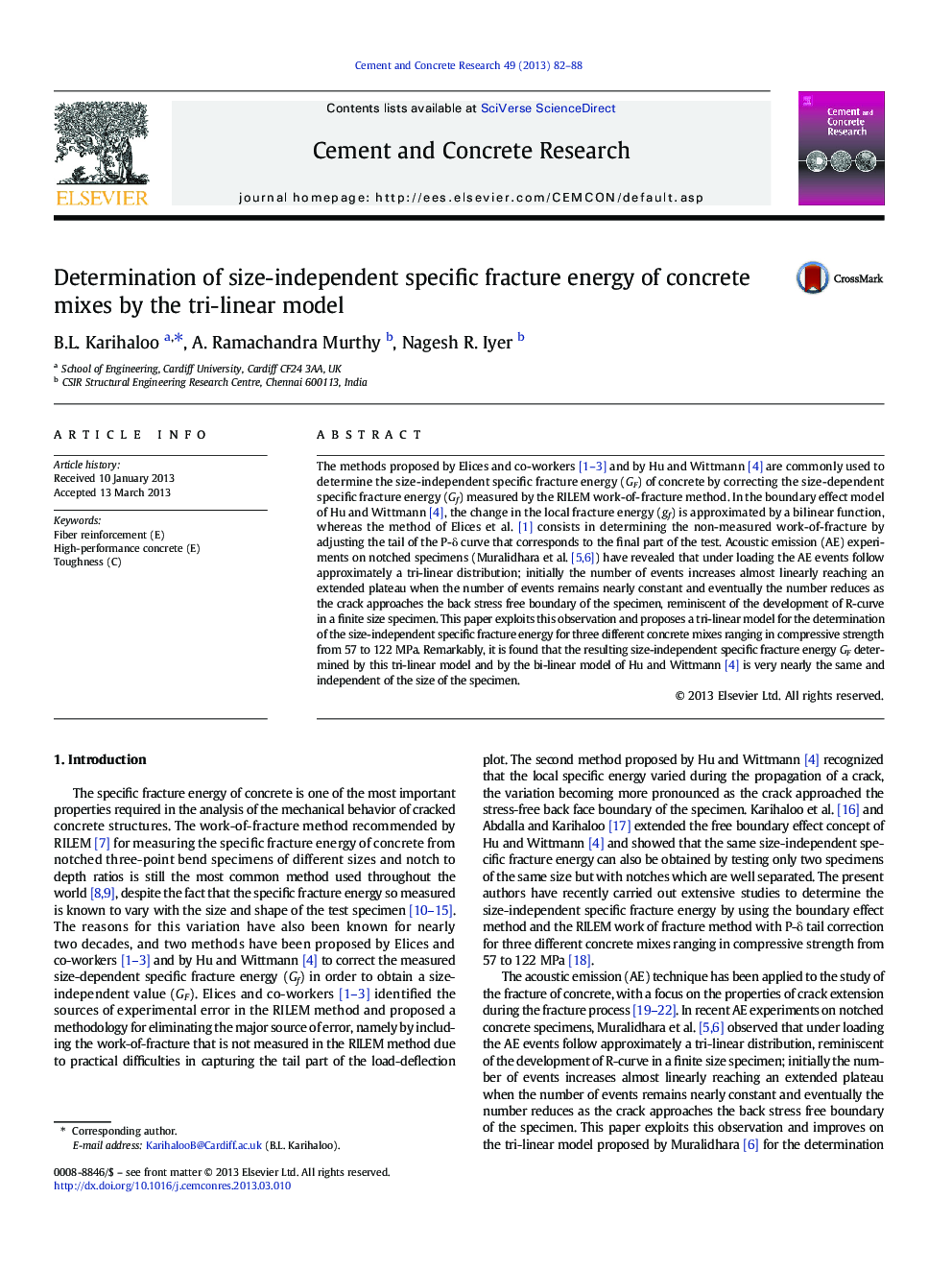| Article ID | Journal | Published Year | Pages | File Type |
|---|---|---|---|---|
| 1456482 | Cement and Concrete Research | 2013 | 7 Pages |
The methods proposed by Elices and co-workers [1], [2] and [3] and by Hu and Wittmann [4] are commonly used to determine the size-independent specific fracture energy (GF) of concrete by correcting the size-dependent specific fracture energy (Gf) measured by the RILEM work-of-fracture method. In the boundary effect model of Hu and Wittmann [4], the change in the local fracture energy (gf) is approximated by a bilinear function, whereas the method of Elices et al. [1] consists in determining the non-measured work-of-fracture by adjusting the tail of the P-δ curve that corresponds to the final part of the test. Acoustic emission (AE) experiments on notched specimens (Muralidhara et al. [5] and [6]) have revealed that under loading the AE events follow approximately a tri-linear distribution; initially the number of events increases almost linearly reaching an extended plateau when the number of events remains nearly constant and eventually the number reduces as the crack approaches the back stress free boundary of the specimen, reminiscent of the development of R-curve in a finite size specimen. This paper exploits this observation and proposes a tri-linear model for the determination of the size-independent specific fracture energy for three different concrete mixes ranging in compressive strength from 57 to 122 MPa. Remarkably, it is found that the resulting size-independent specific fracture energy GF determined by this tri-linear model and by the bi-linear model of Hu and Wittmann [4] is very nearly the same and independent of the size of the specimen.
